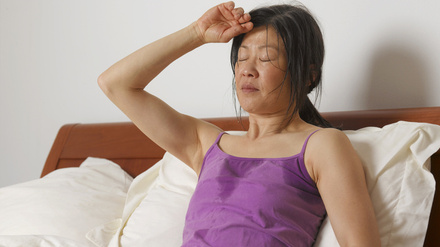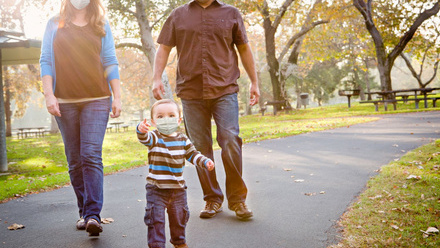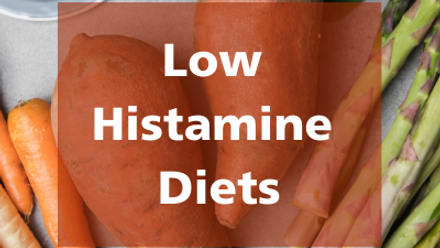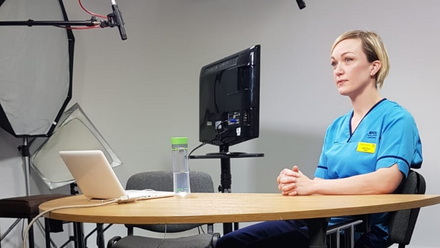Parosmia has gained more recognition since the COVID-19 pandemic but many people, including health professionals, are still unaware not just of the condition but the impact it has on the daily lives of those that have the diagnosis.
Olfactory dysfunction, which has become one of the clinical features of COVID-19, has been associated with less severe disease manifestation.1 Estimates are that half of patients with COVID-19 may lose their sense of smell.2 It is thought that smell loss occurs when the coronavirus infects cells that support neurons in the nose.3 But there might be other ways in which COVID-19 induces smell loss, such as an increase in blood levels of an inflammation-signalling molecule called interleukin-64 or via other inflammatory processes, such as leaky blood vessels, in the olfactory bulbs.5 Seventy-two per cent of people with COVID-19 who had olfactory dysfunction reported that they recovered their sense of smell after a month.6 However, for around 10%, their sense of smell can be distorted for many months and in some cases over a year.7

There are a variety of different smell disorders. Parosmia is defined as a distorted sense of smell. The word parosmia is taken from the Greek words para and osme (smell), and is defined as a distortion of smell within the presence of an odour. Phantosmia is a condition when there is a distortion of smell without an odorant present, meaning the person smells something that isn’t there.8 Anosmia is the complete loss of smell, whilst hyposmia is the reduced ability to smell and hyperosmia (which is very rare) is an enhanced ability to smell.9
Parosmia often follows anosmia and, although the underlying mechanism is unknown, it is thought to be a period of the olfactory nerves recovering. This is usually temporary but how long parosmia lasts varies between people greatly.
Parosmia is currently regarded as one of the symptoms of Long Covid syndrome8 but it is not just COVID-19 that causes smell disorders. Olfactory dysfunction is common: estimates in the general population before the pandemic suggest that 19% of adults (80% in people over 75) suffer from complete or partial loss of smell.10 Prior to the pandemic, the four main causes of smell disorders were sinonasal disease (chronic rhinosinusitis and similar), post-infectious loss, head trauma and neurological conditions such as those associated with ageing, or neurological illnesses such as Parkinson’s disease or Alzheimer’s disease.9
Smell, taste and flavour
The olfactory neurons in the nose receive odour molecules and send information to the brain via the olfactory bulb. As there are approximately 350 types of receptors to detect odours, human brains interpret smell following a combination of different signals.
Olfactory neurons have a unique ability to regenerate, but it would appear that aberrant regeneration lies at the root of parosmia. The process for the newly regenerated olfactory neurons reconnecting to the brain is a trial-and-error process.8 In addition, part of the axonal regenerations can become displaced, leading to a ‘misguided’ regenerating of axons to abnormal parts of the brain.11 Interestingly, the destruction, as well as regeneration, of the olfactory receptors has been reported previously to occur in a patch, checkerboard manner, also contributing to a distortion of smell.8
The sense of taste is through receptors on the tongue, which are involved in detecting the five elements of taste perception: saltiness, sourness, bitterness, sweetness and umami. Tastebuds are a combination of cells – basal cells, structural cells and between 10 and 50 taste receptor cells, which are renewed every 9-10 days.
The way a food smells is essential to the overall eating experience. As a person chews, volatile compounds are released and travel from the back of the mouth to the nose, where they stimulate the olfactory system. Without this, much of the flavour of the food is missed, as opposed to just what is perceived by the tastebuds.
Is it smell or taste or both that are affected by a COVID-19 infection?
Many patients with loss of smell will also report loss of taste. However, this usually reflects loss of flavour perception as a function of smell, rather than true taste disturbance. Asking patients if they can tell the difference between salt and sugar can help to differentiate a taste disorder from an olfactory one.2
Incidence of gustatory dysfunction is reported to be common in COVID-19 and is thought to occur in 42% of patients.12 However, this usually temporary symptom appeared more common earlier on in the pandemic13 and was less common with subsequent variants. It can be difficult to conclude to what extent taste is influenced by olfactory loss or whether it is a genuine independent symptom of COVID-19. There has been evidence to suggest that patients suffer impaired gustation because of a diminished sense of smell and this is, therefore, how the assessment and treatment should be focused.2
Anyone with a change in smell should be advised to speak with their GP so that other potentially serious conditions can be ruled out. In some cases, patients may need referral onto ENT or neurology.
Assessment and treatment of parosmia as a dietitian
The first step is recognition of the condition as this can often be overlooked as a more minor complaint in the context of other Long Covid symptoms. Being able to talk about it freely with someone who understands and is non-judgemental can be extremely cathartic for patients. Patients have reported such feelings as: “It seems silly to complain about this. People are dying of COVID and I’m complaining about the smell of coffee.” (Female, 56)
Let the assessment and consequently the treatment be person-led. Every person with parosmia has a slightly different experience and what works for one person might not work for others. A detailed diet history is useful to help establish foods which are tolerated and those which are triggers.
Studies have so far identified two types of molecules, one containing sulphur and one containing nitrogen, as the triggers for parosmia.14 These same basic molecules are found in lots of different and diverse foods.
Table 1: Food experience trajectory and how to mitigate: a guide for people with parosmia. Reproduced with kind permission from Chrissi Kelly at AbScent.
|
Trigger/safe foods |
Know which foods can and can’t be tolerated. Keep a list handy in the kitchen and try to find ‘swaps’ that can be used when cooking. |
|
Menu planning |
Use online resources or cookery books to pique the palate. Both of these sources are smell-free. Choose dishes that look appealing. |
|
Shopping |
Shop online and have food delivered or ask a friend for help. Try to avoid wandering around the supermarket in search of food that is appealing. This is unlikely to happen and may mean that food is purchased and then wasted. |
|
Preparation and cooking |
Ask for help from family and friends. If this is not an option, cook in a well-ventilated kitchen. Choose meals which don’t take long to cook. |
|
Serving up and eating |
This will depend on the severity of parosmia. Where things are disagreeable but not too severe, try to sit at the table with others if possible. Don’t feel guilty about making changes to the family routine if needed. |
|
Clearing up |
Keep interactions in the kitchen limited and ask for help where needed. |
Common triggers for parosmia include:
- Coffee
- Onions
- Chocolate
- Garlic
- Eggs
- Roasting and grilling
When a person smells one or more of their triggers, this results in a foul smell often described by sufferers as being like sewage or faeces. Parosmic experiences are relatively short lived and the sensation doesn’t linger when the odour source (or trigger) has gone.14 Triggers are not just food related and can often include cleaning products or personal care items and environmental odour,15 meaning that even filling up a car with petrol can trigger a reaction.
Changes in dietary intake with olfactory dysfunction have been widely documented.15,16 The relationship is complex and can lead to a significant change in dietary intake, with diets becoming very restricted very quickly, especially initially, and then over time there is a tendency for dietary intake of fat, salt and sugar to increase.17 Less healthy foods may also be chosen for familiarity and comfort, hence why a dietary assessment is essential and why weight loss may not be evident in people living with parosmia. Assessing muscle mass can be beneficial using hand grip dynamometers instead of looking at weight change in isolation.
Self-assessment is advised to track progress using a home assessment kit such as that suggested by AbScent.18 Smell is subjective and therefore can be difficult to recall day to day and even harder month to month. It can be easy for sufferers to think they are making little progress as it can often be slower than they would like or have anticipated. Keeping track of progress over time in a systematic manner can be helpful. Recovery, as with many Long Covid symptoms, is not linear but can be a mixture of good and bad days. Encourage perseverance and ‘pushing through’, which may feel uncomfortable as a dietitian as it’s not a commonly used phrase, but it can be a valuable tool when it comes to living with parosmia. For example, the first few mouthfuls of a meal can be the worst, whilst the rest of the meal may be tolerable.
Impact on mental health
Part of the dietetic assessment should include questions about the person’s mental health. Burges Watson et al. describe the impact of parosmia on mental health as not only having to manage a poorly understood and fluctuating condition, but also having “an altered relationship with food that includes loss of pleasure and changes in appetite and weight and an altered relationship to the self, the world and other people”.7 In the COVID rehab service in Leeds there are dedicated mental health professionals, but if this isn’t available the patient should be signposted to local services as appropriate, as well as the growing online communities for peer support which can be accessed through the UK charities Fifth Sense and AbScent.
Parosmia can be misunderstood by health professionals and in some cases has been mistaken for an eating disorder. In other situations, where it has not been treated appropriately or has been missed as a diagnosis, patients have ended up in hospital being artificially fed due to the toll that malnutrition has taken on their body.
Another consequence of living with a smell disorder is that it leaves people vulnerable to dangers such as food poisoning and fire, as they are less able to detect spoilt foods and smoke. People with anosmia are more than twice as likely to experience a hazardous event, such as eating spoilt food, compared with people without smell loss.19 There is a misconception that those with parosmia are experiencing ‘less’ smell than healthy people; sometimes their level of smell is very high/high disgust.
Given the extensive nature of potential triggers, some sufferers can feel that there is no safe space either inside or outside of the home. Their ability to socialise, for example in pubs or restaurants, is reduced, leading to feelings of isolation.
If I had an allergy, I could ring the staff at a restaurant beforehand. But I can’t ring them and ask: what does your restaurant smell like?
Female, 24
Dietetic interventions
There is no cure for parosmia but smell (or olfactory) training offers some hope and control as it can support recovery in people suffering with smell disorders.20 Smell training is actively sniffing the same four scents every day, spending around 20 seconds on each scent and doing this mindfully over a period of months. It is a low-risk intervention and not dependent on age, with earlier intervention offering greater benefit.21 Websites such as Fifth Sense and AbScent (which also has ‘Snif’, a smell training web-based app) have step-by-step guides and online tutorials that show people how to smell train effectively, as having the correct technique is vital.22,23,24,25
Nostalgic foods can be helpful for some as people report they can imagine so strongly what that food tastes like that it can be enjoyed, but for others it can be a stark reminder of what they are missing. Some unpleasant flavours can be masked by foods which have a strong flavour that does not cause a distortion, for example cinnamon, chilli oil or peppercorn sauce. Alternatively, other people may prefer to have a much blander diet, opting for foods which naturally have less flavour. Other practical tips around food choices are often shared in online forums.
It is common for people with smell disorders to become bored and lose interest in food, and in that situation it can help to focus on other senses whilst eating: for example, varying the colours of foods and making the food look appetising on the plate; thinking about the textures of different foods and combining varying textures within a meal, eg gooey, flaky, crunchy, soft. With different textures comes different sounds as they are chewed, which stimulates another sense.
For some people, though, this mindfulness approach to eating can give too much focus to an activity they no longer enjoy, and for these people a shorter mealtime works best for them. When the distorted smell is so severe and distressing and when it happens with so many foods (more common in the earlier days) some people may use a nose clip whilst they eat (and cook) and choose to eat quickly. Hopefully, the severity of this phase is relatively short lived. Smell training, as well as having time without the nose clip, should be encouraged in these cases, as without stimulating the olfactory nerves it may be that the sense of smell takes longer to recover.
Heat stimulates the release of a larger number of parosmia-triggering compounds. Choosing cold or room temperature foods will reduce that activity. For example, some people notice that roasting chicken is a parosmia trigger, but cold slices of chicken are manageable.14
Common side effects of parosmia can include nausea and changes in bowel habits, and therefore this advice is often needed in combination with the dietary support for parosmia.
Eating cold foods really works! I can join in with family pizza night now. I just need to cook my pizza earlier and let it cool.
Male, 49
Nutrition support
If oral intake is very poor there are of course ways to make meals and snacks more nourishing: an area very familiar to many dietitians. The challenge with parosmia is finding the foods which are best tolerated and the ideas which are acceptable to the individual. When advising on a ‘food first’ approach, milk and milk-based foods are often recommended, and these can be helpful for those with parosmia too. Some people with parosmia prefer plant-based milks, and choosing those which are highest in protein (eg pea and soya milks) as well as fortified with calcium are good options. These milks can be fortified with milk powder to further improve nutritional intake and a plant-based milk powder can be substituted if preferred.
Table 2: General strategies for the management of parosmia. Reproduced with kind permission from Chrissi Kelly at AbScent.
|
Eat cool or room temperature foods |
The warmer the food, the more volatiles it gives off. Volatiles are responsible for the intensity of the smell experience. |
|
Awareness of trigger and safe foods |
Regular experimentation as they can change. Experimenting can be difficult due to the anxiety of having a bad experience. |
|
Cooking techniques: avoid what is brown |
Cooking at high temperatures, whether meat products (frying, deep-frying, sauteing, barbeque) or carbohydrates (toasting, baking until thoroughly brown, frying (potatoes for instance)) results in the Maillard reaction. The molecular change that happens during the Maillard reaction can provoke parosmia. Instead, try steaming or poaching meats and, with bread, remove crusts and avoid the toaster. |
|
Bland foods |
Plain rice, plain bread (without crusts if necessary), and plain pasta are fine for many people. Cheese and plain dairy products also. Pair with seasonings that add depth and zing: chilli, ginger, black pepper, soy sauce. |
|
Nourishing drinks |
Homemade or buy ready to drink. Choose milk or yogurt-based, which give a good range of nutrients. Avoid protein drinks and powders aimed at athletes. |
|
Master the ‘true tastes’ and try to include them in every plate of food. Adding trigeminal seasonings is also helpful. |
Salty, sweet, sour, bitter, and umami. Examples of this might be Chinese recipes including sweet/sour and chilli with dark green vegetables such as broccoli that have a hint of bitterness. Other trigeminal foods such as ginger, szechuan pepper and peppermint can also lift a dish and make it more appealing. |
|
A colourful plate gives appetite |
Meals that appeal most are usually colourful. Try to avoid white food on a white plate! |
|
Pushing through |
There is anecdotal evidence that ‘pushing through’ a few mouthfuls of food will overcome the initial disgust felt when eating. This does not work as well in the severe phases of parosmia. |
|
Mouth reset |
Something sweet, sour or salty can be helpful in ‘resetting’ the mouth if the parosmia response is triggered. |
Other ways of fortifying meals which may be acceptable for those with parosmia include adding:
- a drizzle of olive oil over pasta
- ground seeds or nuts into a smoothie or bowl of porridge
- full fat natural yogurt or a sprinkling of cheese into mashed potato
- a spoonful of cream into soup
- pureed fruit into jelly made with fortified milk
Nutritional supplement drinks – both over-the-counter and prescribed – can further help improve nutritional intake where oral intake from food is not meeting nutritional requirements.
AbScent have done some fascinating work with focus groups looking at which over-the-counter supplement drinks are well tolerated. Interestingly, adding natural flavourings was preferred to those already flavoured artificially, for example adding ginger, cinnamon, mixed spice, clove or vanilla to an unflavoured or neutral supplement drink.
Micronutrient supplementation should also be considered in people whose diet is lacking overall variety but who are meeting macronutrient requirements.
Vicky’s story
Like many AHPs, I volunteered to be redeployed to help on the adult COVID wards back in 2020 and this is when I contracted COVID-19 and lost my smell and taste. Being a big foodie, you can imagine my joy and relief when it returned two months later. However, this was only short lived as weeks later I opened my fridge to the most horrendous smell, which I now know was the start of my parosmia.
Parosmia made my food taste of either mould, sewage or sulphur, which I affectionately named the ‘COVID’ smell. But it wasn’t just food. During the height of my worst period, body wash, perfumes, toothpaste and even water were all totally repulsive.
I very quickly learnt which foods and smells were triggers so I was able to start actively avoiding these. I spent hours researching parosmia and looking at the compounds in coffee, onion, garlic, meat, banana and eggs as these were my main triggers. My diet changed significantly but I quickly got bored of eating the same six foods, so that’s when I started experimenting with different cooking methods, temperatures and flavourings. I replaced meat with lentils and pulses and dairy with plant-based alternatives. I replaced onions and garlic with chilli and fennel and added copious amounts of cinnamon to hot drinks and porridge. I found myself appreciating texture a lot more, and focusing on that as a way to get enjoyment out of food. I used the opportunity to try new foods and I’m eating foods now that I never ate before.
My parosmia changed over time and I learnt to adapt to this. I eventually forced myself to eat the meals I previously enjoyed and tried to do this mindfully alongside smell training. My parosmia lasted a year and I can honestly say I have never felt so isolated and detached from life. I was terrified of the thought I would never be able to enjoy cooking and eating again. It was truly awful. Thankfully it improved and, two years later, I am now 90% recovered.
At the time I was so surprised at how little information and support existed for individuals with smell and taste distortions. I contacted my adult dietitian colleagues for information but there was very little. AbScent was my saving grace and the website now has a wealth of information including resources, webinars and support groups. Being a dietitian and having experienced this myself, I have enormous empathy for patients experiencing anosmia and smell distortions. As practitioners, we need to be more aware and understanding of the situation. Taking a thorough history and listening is key, as small adaptations to a person’s food or the way they cook can make a significant difference to the nutritional intake and wellbeing of that individual.
Vicky Bittle, Paediatric Dietitian
A final note
Hopefully this article has helped to shine a light on the lesser-known area of parosmia and highlighted just how fundamental dietitians are in supporting those who are suffering. For dietitians working outside of a multidisciplinary team, encourage referrals for anyone with parosmia – yes they might not meet service referral criteria but people with parosmia need dietetic support. They need someone to understand, listen and encourage.
References
- Saniasiaya J, Islam MA, Abdullah B. Prevalence of olfactory dysfunction in coronavirus disease 2019 (COVID-19): a meta-analysis of 27,492 patients. Laryngoscope 2021;131:865–78. Available from: pmid: ncbi.nlm.nih.gov/pubmed/33219539 doi:10.1002/lary.29286
- Walker A. Anosmia and loss of smell in the era of covid-19. BMJ 2020; 370 m2808. Available from: doi: doi.org/10.1136/bmj.m2808
- Marshall M. COVID’s toll on smell and taste: what scientists do and don’t know. Nature 2021;14 January.
- Cazzolla AP. et al. Taste and Smell Disorders in COVID-19 Patients: Role of Interleukin-6. ACS Chem. Neurosci. 2020; 11, 2774−2781.
- Lee MH. et al. Microvascular Injury in the Brains of Patients with Covid-19. N. Engl. J. Med. 2021;384:483-485 Available from: doi.org/10.1056/NEJMc2033369
- Reiter ER, Coelho DH, Kons ZA, Costanzo RM, Subjective smell and taste changes during the COVID-19 pandemic: Short term recovery. Am. J. Otolaryngol. 2020;41, 102639.
- Burges Watson DL, Campbell M, Hopkins C, Smith B, Kelly C, Deary V Altered smell and taste: Anosmia, parosmia and the impact of long Covid-19. PLoS One 2021; 16,9 DOI:10.1371/journal.pone.0256998
- Saniasiaya J, Narayanan P. Parosmia post COVID-19: an unpleasant manifestation of long COVID syndrome Postgraduate Medical Journal 2022; 03 DOI:10.1136/postgradmedj-2021-139855
- Hummel T, Landis BN, Hüttenbrink KB. Smell and taste disorders GMS Curr Top Otorhinolaryngol Head Neck Surg. 2011; 10: Doc04. doi: 10.3205/cto000077
- Brämerson A, Johansson L, Ek L, Nordin S, Bende M. Prevalence of olfactory dysfunction: the skövde population-based study. Laryngoscope 2004;114:733-7.doi:10.1097/00005537-200404000-00026
- Graziadei PP, Levine RR, Monti Graziadei GA. Plasticity of connections of the olfactory sensory neuron: regeneration into the forebrain following bulbectomy in the neonatal mouse. Neuroscience 1979;4:713–27.doi:10.1016/0306-4522(79)90002-2
- Tong JY, Wong A, Zhu D, Fastenberg JH, Tham T. The prevalence of olfactory and gustatory dysfunction in COVID-19 patients: a systematic review and meta-analysis. Otolaryngol Head Neck Surg 2020;163:3-11.doi:10.1177/0194599820926473.
- Parma V. et al. More Than Smell—COVID-19 Is Associated With Severe Impairment of Smell, Taste, and Chemesthesis. Chemical Senses, 2020; 45, 7, 609–622, doi.org/10.1093/chemse/bjaa041
- Parker JK, Kelly CE, Gane SB. Insights into the molecular triggers of parosmia based on gas chromatography olfactometry. Communications Medicine. 2022; 2(1); 1-8.
- Parker JK, Methven L, Pellegrino R, Smith BC, Gane S, Kelly CE. Emerging Pattern of Post-COVID-19 Parosmia and Its Effect on Food Perception. Foods 2022; Apr; 11(7): 967.
- Chaaban N, Hoier ATZB, Andersen BV. A Detailed Characterisation of Appetite, Sensory Perceptional and Eating- Behavioural Effects of COVID-19: Self-Reports from the Acute and Post-Acute Phase of Disease. Foods. 2021;10:892. doi: 10.3390/foods10040892.
- Rawal S, Duffy VB, Berube L, Hayes JE, Kant AK, Li CM, Graubard BI, Hoffman HJ Self-Reported Olfactory Dysfunction and Diet Quality: Findings from the 2011-2014 National Health and Nutrition Examination Survey (NHANES) Nutrients. 2021;13:4561.
- AbScent. Home Assessment Test. [Internet] 2020. abscent.org/application/files/5515/7532/6861/Self_assessment.pdf
- Pence, T. S. et al. Risk Factors for Hazardous Events in Olfactory-Impaired Patients. JAMA Otolaryngol. Head Neck Surg. 2014 140, 951–955
- Liu DT, Sabha M, Damm M, et al. Parosmia is Associated with Relevant Olfactory Recovery After Olfactory Training. The Laryngoscope. 2020;131:618–23.doi:10.1002/lary.29277; Altundag A, Yilmaz E, Caner Kesimli M. Modified Olfactory Training Is an Effective Treatment Method for COVID‐19 Induced Parosmia. The Laryngoscope.2022;132; July; 1433-1438
- Jafari A, Lehmann AE, Metson R, Is Olfactory Training Effective Treatment for Postinfectious Smell Loss? Laryngoscope 2021;131:1198-1199
- AbScent. Welcome to smell training. [Internet] Accessed online May 2022: abscent.org/learn-us/smell-training
- NoseWell Parosmia at AbScent [Internet] Accessed online May 2022: abscent.org/nosewell
- Fifth Sense [Internet] Accessed online May 2022: fifthsense.org.uk/smell-training/
- Snif App at AbScent [Internet] Accessed online May 2022: abscent.org/resources/snif-app






